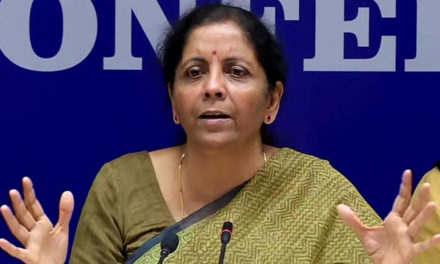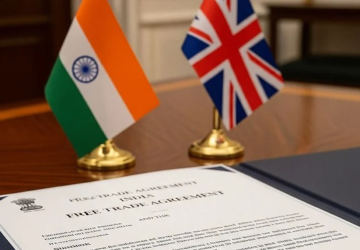
Revenue growth of India’s readymade garment (RMG) industry is set to nearly halve on-year this fiscal as the imposition of 50% tariffs by the US on its imports from India becomes effective from 27th August 2025. That, coupled with a decline in profitability, will impact credit metrics for industry players. The impact will vary by company, some of which get more than 40% of their revenue from the US. An analysis of over 120 RMG makers rated by us, with total revenue of ~Rs 45,000 crore, indicates as much.
RMG exports totalled ~$16 billion last fiscal1 and accounted for ~27% of the RMG sector’s revenue (see chart 1). A third of the exports were to the US. The 50% tariff2 puts India at a distinct disadvantage compared with competing nations like China, Bangladesh and Vietnam.
Says Manish Gupta, Deputy Chief Rating Officer, Crisil Ratings, “If the tariffs hold, RMG exports to the US will see a sharp decline. In the first quarter of this fiscal, total exports from India rose ~10% on-year to ~$4 billion, with exports to US recording a ~14% growth during the same period. The trend is expected to sustain through 26th August till the enhanced tariffs kick in. Post 50% tariffs, Indian exports to the US may be minimal, despite limited capacity of competing nations in value-added garments and lead time taken by big-box retailers in the US to re-align their sourcing arrangements. Overall, we expect the share of the US in India’s RMG exports to fall from 33% last fiscal to 20-25% this fiscal.”
This would mean players will have to realign trade with other major export destinations—the European Union (EU), United Kingdom (UK) and United Arab Emirates (UAE), which together form ~45% of India’s exports for fiscal 2025. The recently signed Free Trade Agreement (FTA) with the UK is also likely to result in higher exports to that country from end of this fiscal, providing some relief to the industry.
Says Gautam Shahi, Director, Crisil Ratings, “The domestic market for RMG, accounting for ~three-fourths of the sector’s revenue, will continue to see steady revenue growth of 8-10% this fiscal, fuelled by economic growth, interest rate cuts, and tax reductions. This, in turn, will cushion the tariff blow and spur overall growth at the sector level, but at a slower pace than last fiscal.”
Weaker revenue growth and tariff-driven competitive disadvantage in US will impact profitability of India manufacturers. Profitability of RMG exporters dependent on the US could contract 300-500 basis points as they will bear the tariff brunt. Further, potential oversupply in the domestic market may also impact domestic margins to some extent. Therefore, profitability at the industry level may dip 50-150 bps this fiscal.
This will also pare down players’ credit metrics, with interest coverage dipping to 3.5-3.7 times this fiscal from 3.9 times last fiscal, and financial leverage3 rising to 3-3.1 times from 2.78 times. The deterioration in the credit metrics will be sharper for manufacturers whose exposure to the US markets is greater than 40% of their revenues.
In case the tariffs are returned to the previously announced level of 25%, India could maintain its competitive advantage, given its higher presence in the value-added garments segment compared with its rivals. That would then limit the impact on Indian exports to the US.
Overall, the continuation of higher tariffs on India versus competing nations, the impact on demand in the US because of inflationary pressures and any higher-than-expected increase in cotton prices are all factors that can impact operating performance for Indian RMG manufacturers, so will bear watching.
1 Source: Ministry of Commerce and Industry
2 Tariffs of 50% are applicable on exports to the US from India from 27th August 2025. Thus, significantly lower exports are expected for the next 7 months of the current fiscal (i.e., September 2025 to March 2026)
3 Financial leverage = ratio of debt to earnings before interest, taxes, depreciation and amortization















